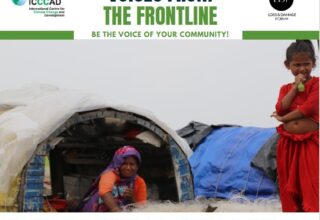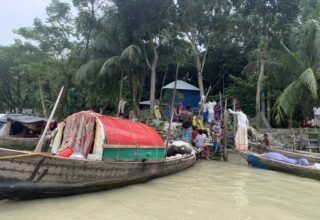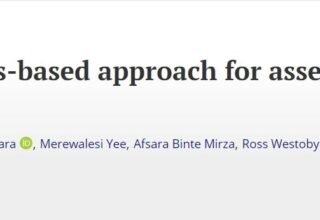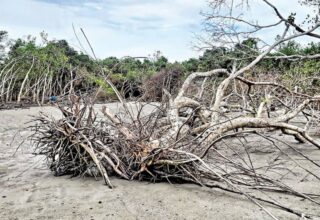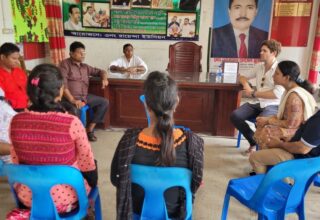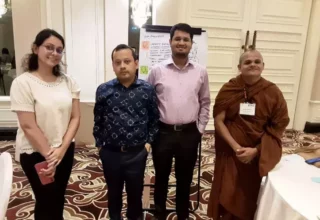Adaptation is more urgent than ever before as climate change-induced catastrophes sweep across the globe, mostly targeting the least developed entities and fragile ecosystems. More urgent, it seems, is the investment and effort needed to implement different types of adaptation to spearhead long-term solutions
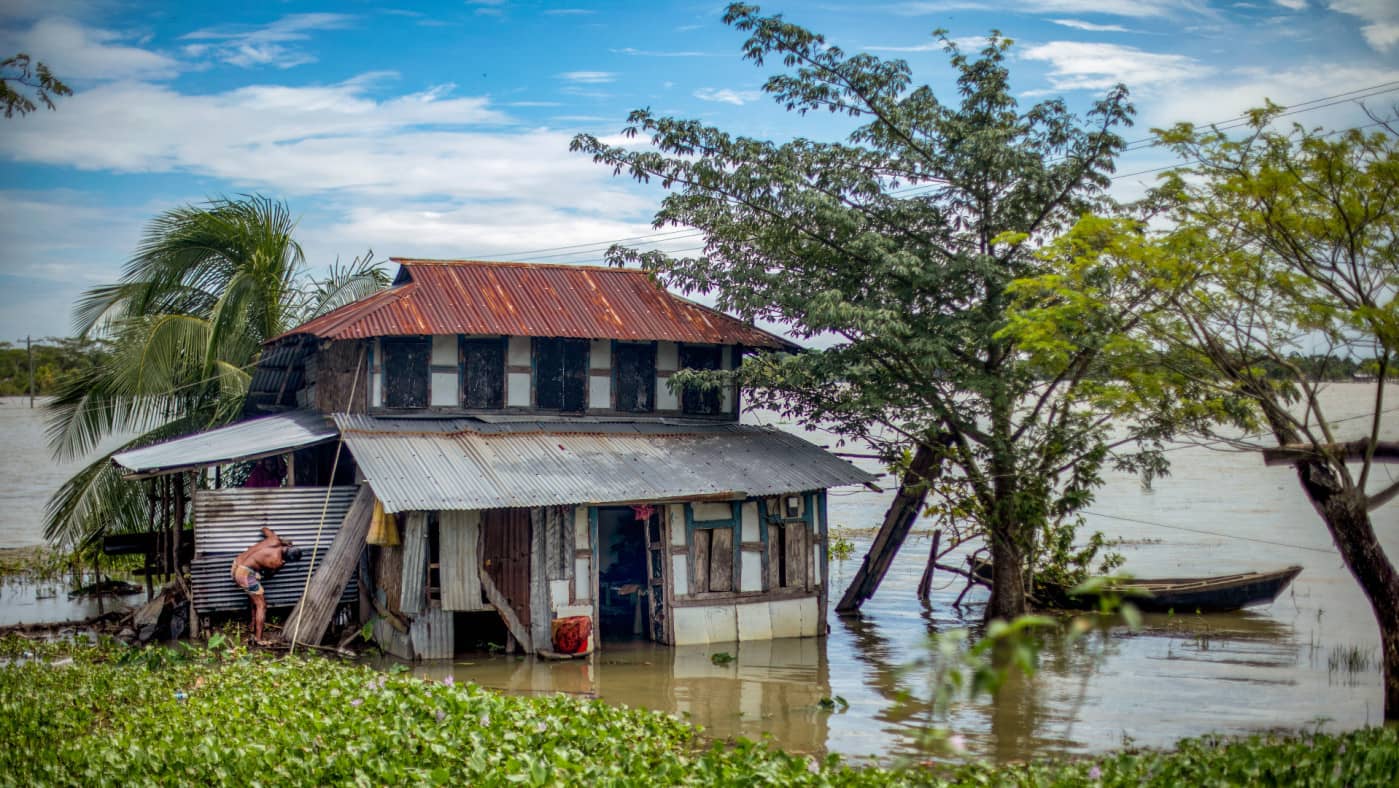
The global community has been citing Bangladesh as one of the most vulnerable countries ever since the concerns over climate change came to the fore. The obvious reasons are geographic location, flat topology, high population density, poverty and lack of resources to combat the impacts of climate change.
While the magnitude of vulnerability will continue to exponentially increase due to climate change, the country’s scope to respond to this imminent danger stays very limited.
According to research, Bangladesh’s per capita greenhouse gas emission is considered one of the lowest to date and it can barely offer any significant mitigation at the global scale; additionally, implementation of a mitigation option will barely reduce the vulnerability of the country.
The global predictions and in-house scope limitation have led the country to build responsiveness to climate change through adaptation for its very political and economic well-being. Bangladesh spends $3 billion per year on adaptation and managing disaster-related risks.
The investment mostly includes adaptation measures such as flood management schemes, coastal polders and embankments, plinth rising, cyclone and flood shelters, cyclone and flood forecasting systems, saline-tolerant varieties, coastal green belts and the raising of roads and highways above flood levels.
Bangladesh was the first country, along with Mauritania, to formulate and submit its National Adaptation Programme of Action (NAPA) to the United Nations Framework Convention on Climate Change (UNFCCC) in 2005.
In 2009, the Bangladesh Climate Change Strategy and Action Plan (BCCSAP) was formed and we became the first least developed country (LDC) to frame such a coordinated action plan.
Often cited as an example of disaster management, the country has integrated disaster risk reduction strategies in national development policies and ensured most of the development programmes are aligned with Sustainable Development Goals (SDGs).
While Bangladesh has readily adapted to all the impacts of climatic hazards, most of these adaptive mechanisms were infrastructure-heavy and were not planned in accordance with future projections.
With increasing frequencies and intensities of climate-induced floods, flash floods and cyclones, the capacity of such built infrastructure to withhold would often exceed, which led to embankment breaching and erosion.
Salinity intrusion and waterlogging were the outcomes of embankment breaching that later created issues like permanent dislocation of vulnerable individuals and communities.
Studies also stated that the use of salt-tolerant varieties can possibly reduce vulnerability for a certain time period, however, with saline concentration increasing every year and with land staying flooded most of the time of the year, crop cultivation seems quite challenging.
Such examples of adaptation failures have proved that structural and non-structural coping mechanisms have only allowed individuals and communities to cope for a certain time.
Bangladesh now must reinvent its adaptation to make it more comprehensive and effective, while putting together all the components required for pursuing sustainable adaptation considering future climatic stressors.
While short-sighted adaptation techniques can lead to maladaptation, sustainable and holistic adaptation minimises the adverse impacts of climate change.
Thus, the promotion of adaptation interventions has been internationally recognised as an important strategy for the adverse impacts of climate change in the UNFCCC process.
As per different research papers, adaptation interventions should be categorised into four types- hardware, software, org-ware and heartware.
The most widely used adaptation interventions are called ‘hardware’ which exclusively includes capital goods and infrastructural solutions such as developing low-cost climate-resilient housing, polders, embankments, industries for employment opportunities, etc.
Hardware is primarily responsible for climate-proofing development/irrigation systems/roads/electric networks; in a nutshell, they are needed to withstand all the climate change impacts with artificial infrastructure.
Countless research pointed out that developing countries, which are particularly climate vulnerable, are heavily skewed towards ‘hardware’ while other forms of adaptation remain underexplored. Such biases have often averted sustainable and effective adaptation in long run.
Bangladesh, predominantly focusing on ‘climate proofing’ or ‘climate hardening’ of infrastructure and technology must now promote forms of adaptation which include rural resilience, maintaining natural capital and strengthening community assets while enhancing good governance to produce resilient institutions.
‘Software’ adaptation, on the other hand, entirely deals with capacity, processes, knowledge, ecosystem-based solutions and techniques needed to make use of/understand the hardware.
It places knowledge and absorptive capacity at the epicentre of technology transfer, covering skills, including aspects of awareness-raising, education and training.
Examples of software adaptation may also include insurance schemes or crop rotation patterns, agroforestry, improved soil, water and crop management, ecosystem restoration, improved extension services, decentralised early warning systems in coastal zones, coastal afforestation, and farming practices research on new varieties.
Thus, software adaptation practices can be put as an approach which is more community driven and follows an eco-centric pathway.
The third distinction is equally important to ensure long-term adaptation benefits, which is the ‘org-ware’. ‘Org-ware’ particularly relates to ownership and institutional arrangements of the community/organisation where a specific ‘hardware’ will be put to use.
This specific subdivision of adaptation technology relies on the concept of tacit knowledge dealing with the complexities of the knowledge-exchange process.
Tacit knowledge here denotes knowledge which cannot be categorised and depends on learning by doing approach; to specify, it is highly dependent on social interactions.
Further, org-ware refers to the endurance of an effective institution/s, which usually indicates government ministries or departments, in charge of planning and policy formulation, its capacity to develop and revise climate policies; mostly dealing with institutional level.
Examples of org-ware may also include- the creation of water-user associations, institutional capacity building, community power over adaptation investment and adaptive co-management schemes.
Another emerging concept of adaptation intervention is heartware- exclusively dealing at the individual level. Heartware is a working concept, that emerged in 2015 and is an interdisciplinary approach which tries to integrate Asia-oriented community spirit, local knowledge and cultural, spiritual or religious traditions in climate change adaptation decision-making.
Systematic integration of hardware, software and orgware can also form the foundation and nurture the heartware approach leading to behavioural changes in individuals via educational programmes at the primary school level and public campaigns to take responsible action.
As most of the climate change adaptation decision continues to grow under the supremacy of science and technology, heartware here resonates, an inherent connection of mankind to nature.
In the realm of heartware, the humanistic dimension portrays the collective willingness of multiple stakeholders to continuously collaborate and solve ‘wicked’ climate issues to attain a more resilient life.
It aims to promote continuous social learning and inclusion of an acknowledgement of individual values and perceptions while promoting meaningful dialogues to ideally reduce conflicts and strengthen the bonding among different stakeholders. It further emphasises the psychological well-being and confidence building of individuals.
In Bangladesh, multiple studies have explained how small farmers take loans from organisations for crop cultivation and rely on the harvesting season for repaying those loans, and how unusual or unseasonal climate-induced floods and cyclones destroy their crops.
Such shocks and the constant stress of being unable to repay loans have been and are still forcing some individuals to commit suicide. If heartware is practised in Bangladesh, this will likely help introduce programmes to conduct counselling at the individual level in vulnerable communities and boost their confidence while educating them about alternative opportunities.
The country has implemented ideas relevant to all the divisions of adaptation mentioned above; however, hardware adaptation technology weighs much higher than all the other distinctions.
Despite the diversity of these adaptation programmes, Bangladesh needs to couple adaptive technology with governance, community and individual welfare.
Further, we suggest the adoption of a more participatory and decentralised approach in the country to better understand how various climate stressors influence socio-economic and socio-ecological factors.
We also urge investing in locally based studies to better understand the capacity of individuals and communities needed to rebound from the impacts of climate change. Apart from integrating all the adaptation types, we suggest heartware be prioritised in long-term decisions.
Although there is no such empirical evidence to support the statement that ‘heartware works better than non-heartware approaches,’ the climate change issues and complexities associated with future projections significantly portray the need for heartware approach in Bangladesh.
While hardware, software and orgware are often associated with provisional outcomes, heartware can be the foundation to bring about continuous improvement.
Additionally, the shared values and knowledge can work as an essential catalyst to this process of achieving the resilience and prosperity that the country seeks while graduating.
Originally this interview was published on 11 October, 2022 at THE BUSINESS STANDARD .
About the Authors
Md Bodrud-Doza is a Doctoral Researcher at the department of Geography, Environment and Geomatics, University of Guelph, Canada.
Khandker Tarin Tahsin is Junior Research Officer at International Centre for Climate Change and Development.

